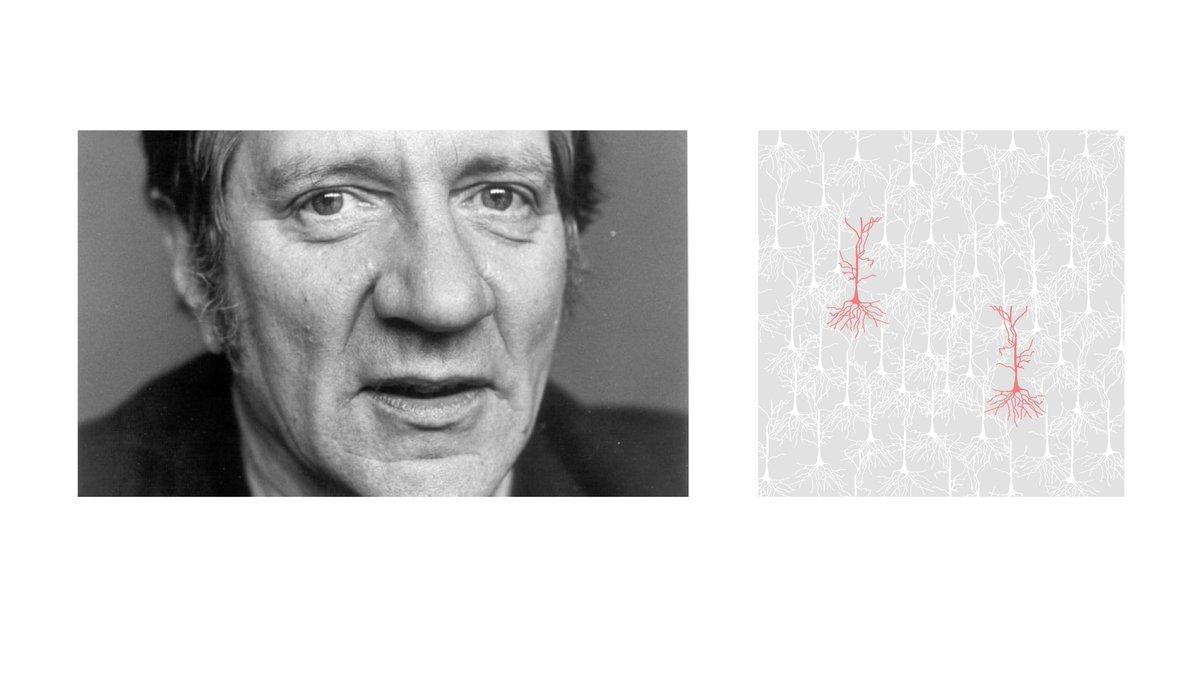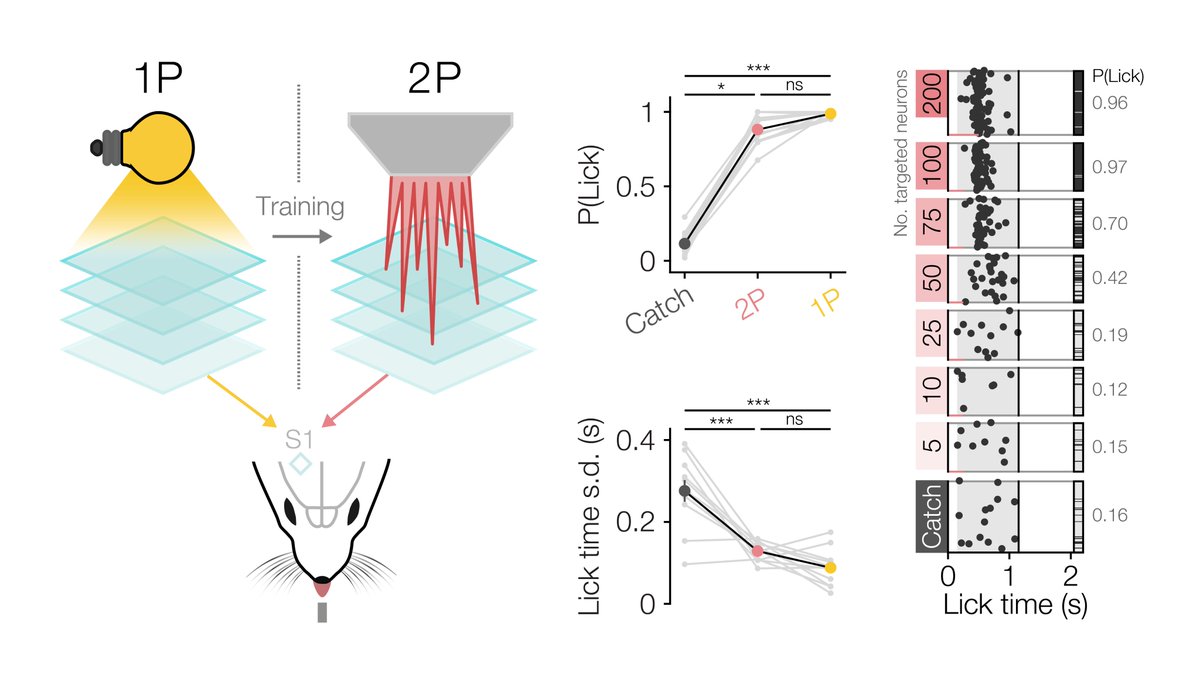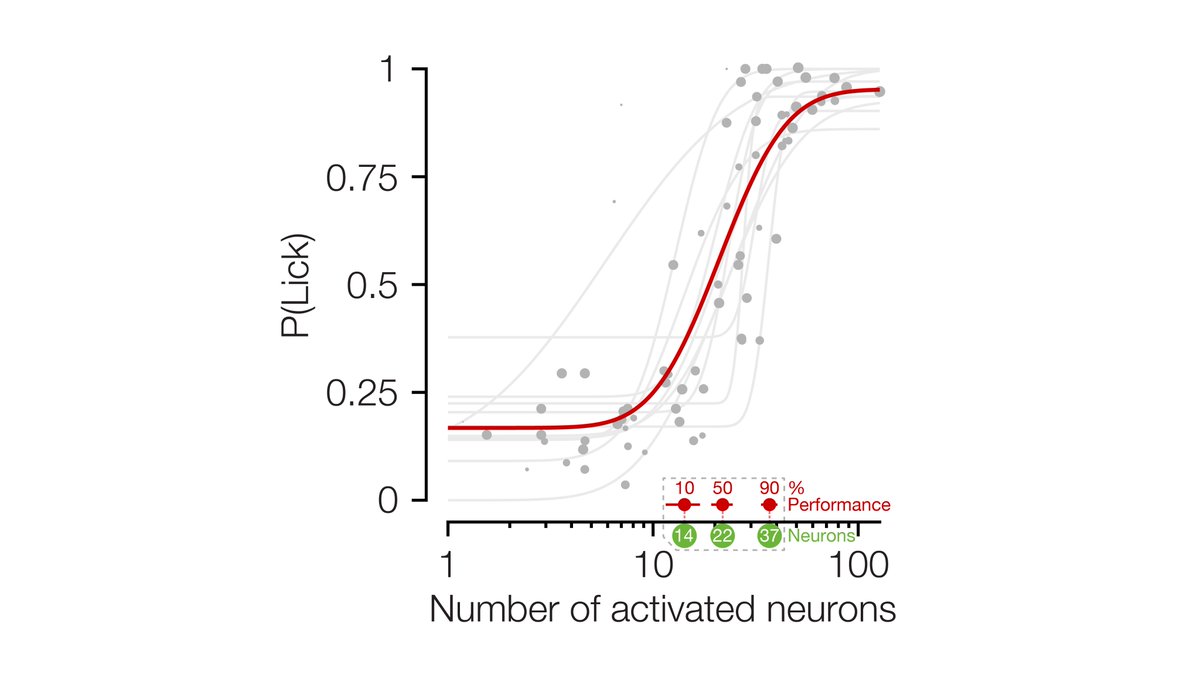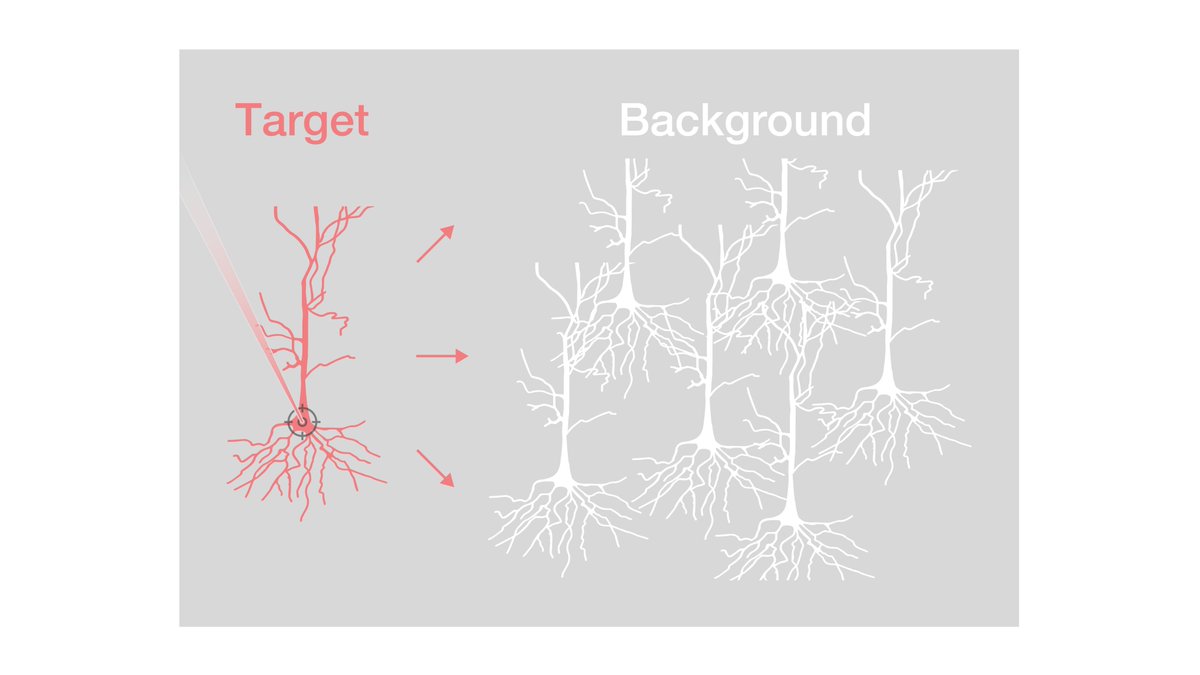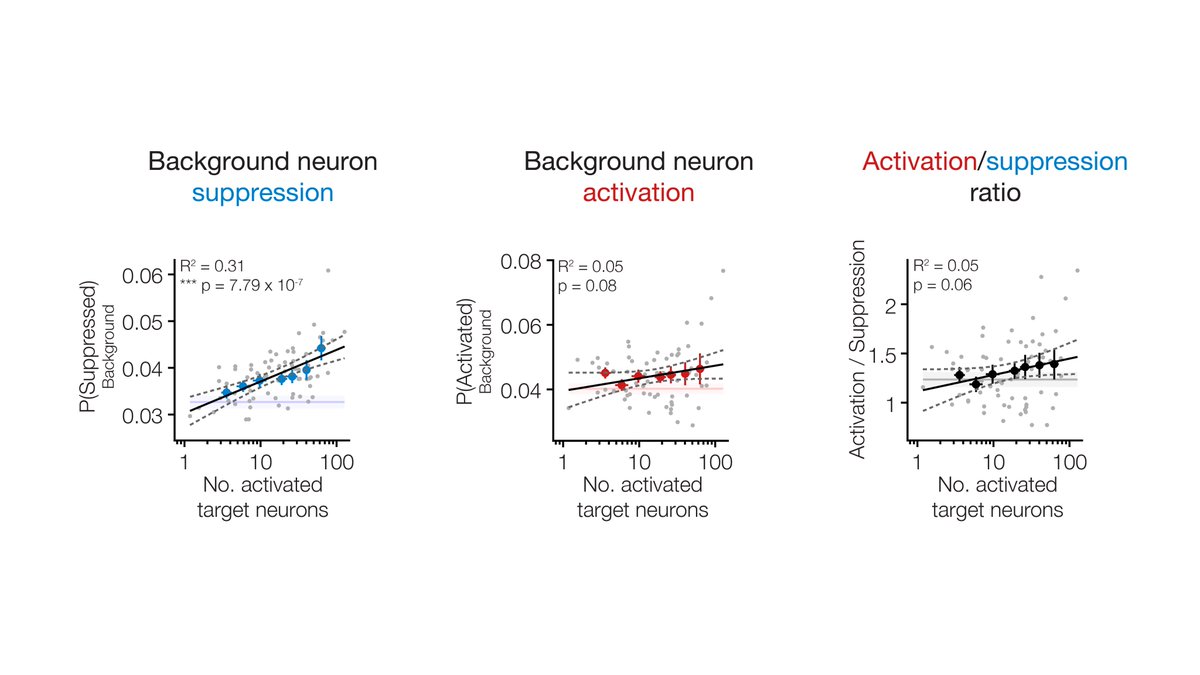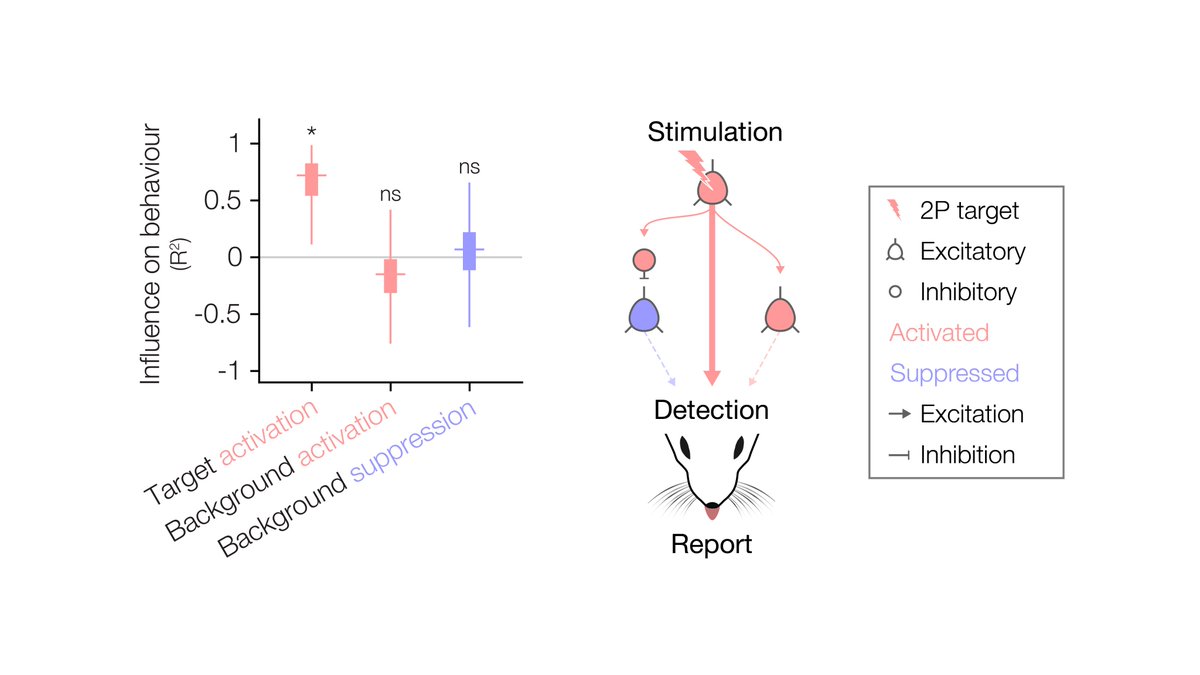The brain can perform all of its amazing feats on about the same amount of energy required to run a lightbulb. How does that work? To understand how such efficiency might emerge, see our paper: https://elifesciences.org/articles/58889 ">https://elifesciences.org/articles/... and the story below.
The late Horace Barlow suggested that the brain is so efficient because it can represent the maximum amount of information with the minimum number of active neurons – a “sparse code”.
Barlow’s radical proposal was that even though our brains are composed of billions of neurons, perception and action may be controlled by a surprisingly small subset. But what is the lower limit? How many neurons are sufficient to produce a percept and drive behaviour?
Previous landmark studies using one-photon (1P) optogenetics (Huber et al. 2008) or electrophysiological (Houweling & Brecht 2008) approaches, which do not allow precise titration of the number of neurons, have yielded a wide range of estimates of the minimum number of neurons.
To attack the problem we used an “all-optical” approach, combining two-photon (2P) optogenetics, digital holography and 2P calcium imaging in mice trained to tell us, by licking for a reward, when they perceive the direct activation of cortical neurons.
We first trained mice to detect activation of many neurons with 1P optogenetics. Then we trained them to detect 2P photostimulation of specific neurons, allowing us to precisely titrate the number of neurons activated and measure perception - the perceptual psychometric curve.
Surprisingly, this relationship is sigmoidal, sensitive and steep: mice could detect 14 neurons at their perceptual threshold, and only 37 neurons were required to saturate behavioural performance.
But the psychometric curve is not fixed. Over multiple days detection of small numbers of neurons improved, demonstrating that perceptual sensitivity is plastic – the efficiency of the brain may improve with learning. This may explain the lack of consensus in previous studies.
Intriguingly, this learning generalized to neurons hundreds of microns away that weren’t targeted for 2P training on preceding days. Such transfer of learning from one instance of a task to another evokes Harry Harlow’s concept of “learning to learn” at the single neuron level.
These results support the sparse coding hypothesis. But how does the brain maintain such sparseness given the extra activity we drive in the network? To answer this we recorded the response of background neurons not targeted for photostimulation.
Activating target neurons caused suppression of background neurons that scaled with the number of target neurons, with little recruitment of background activation. This resulted in similar activation/suppression ratios irrespective of number of target neurons – homeostasis.
To tease apart the perceptual influence of target and background neuron modulation, we compared their impact on behaviour. Only target neuron activation had a significant influence on behaviour.
So - a handful of neurons can trigger a percept and the psychometric curve is remarkably steep, suggesting that perception is exquisitely sensitive to cortical activity. This sensitivity improves with learning, and such learning generalizes beyond neurons that evoke it.
This has been an incredible effort by our team over many years, led by @hwpdalgleish and joint lead authors @llerussell and @paqio. Thanks to @eLife and our reviewers for a swift, constructive review process and to @wellcometrust and @ERC_Research for supporting this work.

 Read on Twitter
Read on Twitter
